(dramatic orchestral music)
– Welcome to University Place Presents. I’m Norman Gilliland.
When a theater organist launched into the Overture film, you could smell popcorn and feel the excitement in the air. We’re talking about silent films, of course, which, as it turns out, weren’t so silent after all. They had music all the way through them, often live music played by an organist who reinforced every frame of the action and introduced the characters and their emotions. It’s an art form that’s had resurgence in the past several decades, and one of its leading practitioners today is with me here in the Capitol Theater in Madison. Welcome to University Place Presents, Jelani Eddington.- Thank you, Norman, it’s a pleasure to be here.
– At the Grand Barton organ, one of the great theater organs in the country in its original location.
– Indeed.
– And, we’ll get into some of its bag of tricks a little bit later, but first this whole phenomenon of films. It started out with nickelodeons, in which one viewer would view one very short film, but somewhere along the line that turned into a theater experience.
– Right, and a lot of that evolution was driven by technology as Hollywood figured out how to do more things onscreen and how to use that technology. So, too, grew the motion picture industry. And it was wonderful to see that evolution from, as you say, the original nickelodeons to having, literally, a theater, a movie palace, if you will, on every corner in every city in America.
– And, there was a whole galaxy of little movie studios around the country. We’re talking about 1920, 1925. And one of the more remarkable ones, by today’s standards, certainly, was the Norman Studios down in Arlington, Florida, how did that come about?
– Well, the Norman Studios is a really interesting, an interesting story behind that, and that sort of brings us into the picture that we’re going to look at a little bit today, but one of the things that Richard Norman was really interested in doing was portraying African Americans in film. And that was something that, at that time in the 1920s, portrayals of African Americans were oftentimes full of a lot of regrettable stereotypes and typecasting, if you will, and he really wanted to do something completely different from that. He wanted to show the very rich history of African Americans and using African American actors, and to portray them in a very positive way, and that’s something that was, not only unique for the time, but very refreshing to see.
– And, in this era of notable film, some of which we remember today, where is the position of these films that Norman Studios produced?
– Well, as we look back on that history, the film, particularly “The Flying Ace” that we’re going to see a little bit of in just a few minutes, really stands out as one of his notable films, and it’s just, again as I said a few moments ago, it’s great to be able to bring that to life, not just to see it, but then from my perspective as an accompanist, to be able to try to lend music to it and bring it back to life in a musical way as well.
– In this instance, and we’ll get into it a little bit more later, you’re more than an accompanist, you’re the composer of this entire film score, minus the parts provided by Rachmaninoff and Schubert, which are kind of hard wired into the film in some cases.
– Right, and that’s one of the things that is really both challenging and also gratifying as a scorer for film is that the job of the musician is to take a picture that’s just moving pictures, if you will, and bring it to life through the use of music, and if, even thinking about that in modern terms, if you go to the movies today, if you stripped away the musical score, you’d be left with just a skeleton, really, you’d be left with a shell of what you get in the final result, and that was very much true, in fact even more true in the 1920s when this art form was developing because there was, in the absence of the musical background, there was no music, no sound at all. And one of the jobs, one of the most important jobs of the organist is the composer as the accompanist is to select music, either through composition or compiling existing pieces of music that, not only match what’s going on on the screen, but also reinforces it and helps to bring it to life to make it a positive experience for the viewer.
– Kind of gives the viewer an emotional cue, often.
– Absolutely, it does, and again, it’s the same way that we relate to music and films today. You often think about a scary sequence, or something where you can feel your heart start to pound in your chest. That’s a lot of times driven by musical cues in the film, and it’s exactly the same role that you would take with a film from the ’20s.
– Now, some of those techniques, of course, go all the way back to opera. For example, there would be a light motif to establish a particular character. Is that the sort of thing you would do with silent film music?
– That’s very much the sort of thing, in fact, one of the most powerful tools that you have as an accompanist is to pick some sort of theme. Sometimes it’s a very short theme, maybe just a few notes. Other times, it may be a longer, more developed theme, and use that to cue, to signal, if you will, to the viewer, that this is related to a particular character. So if you’ve done your job well, then when– Just by hearing that music, the viewer knows that this is going to be, maybe the villain’s theme, or maybe the hero’s theme, or the love interest’s theme, and as that recurs throughout the film, it really reinforces that association with the audience.
– So, who’s the hero in “The Flying Ace?” Introduce him to us with his light motif.
– Sure, so the hero in “The Flying Ace” is a gentleman by the name of William Stokes, and at the very beginning of the film, we will hear this motif, and then throughout the film, in various scenes where he is playing an important role, you’ll hear it again, and that theme sounds like this.
(organ music)
– Well, as long as you’ve introduced our hero, why not just launch this into the film and we’ll meet some of our other major characters and see how it all comes together at the beginning of “The Flying Ace.”
– That sounds like fun.
(organ music)
– Packing a lot of introductions into a fairly short space there musically.
– There are about four main characters that we see in the first minute and a half of the film.
(laughing)
– Well, you have quite the instrument to work with here. The Grand Barton organ, as I mentioned earlier, is one of the relatively few in the country in its original theater location here at the Capital Theater in Madison, and what makes this organ different from one you’d find in, say, a small community’s church, or any number of other places, kind of middle-class locations?
– Sure, what really distinguishes the theater organ, such as the Barton here at the Capital Theater is, first of all, it’s located in a theater, and that’s not an accident. The purpose of these instruments back in the 1920s, as the silent film era was really coming of age, was to provide this musical accompaniment. To do that, they had to be orchestral instruments, meaning that they had to be able to recreate with pipes, it’s a pipe organ after all. They had to be able to recreate the same sorts of sounds with pipes that you would hear if you were listening to an orchestra. Before these instruments came along, they were primarily orchestras, or sometimes pianists in smaller theaters, that provided the musical accompaniment, so as a result of that, one of the main differences in what really sets theater organs apart from, say, organs in a church, is that they were designed to be orchestral instruments, so you hear a lot more orchestral sounds, you also hear sounds that, for want of a better term, are sound effects, things that you can use if, for example, somebody slips on a banana peel and falls down–
–
(laughing)
Never happens in silent films.
– Never happens, never happens, but if it did happen, you’d have a sound effect to use for it, and those sorts of things, those sorts of effects that, on most organs in churches, which are designed primarily for liturgical use, you don’t need symbols and drums and slide whistles and those kinds of effects.
– Interesting image conjured thereby.
(laughing)
Well, so what are some of the special effects you have available to you on the Grand Barton Organ?
– Well, some of the things that I use the most on the Barton here, just to show off a couple. There is something called the Glockenspiel, which just little bells.
(bell music)
So, that can be very useful depending on what’s going on in the scene. There are also big bass drum.
(bass drum music)
And that, again, if somebody slips on a banana peel, you might be able to use that. Also some effects, like for example, tambourines,
(tambourine music)
drums,
(drum music)
a little woodblock as well. So all of those effects, again, usually you don’t use them all at the same time, but when you need to accompany something or really bring out a particular sound effect, those devices are available.
– So, this kind of organ was developed essentially for playing silent films.
– That was their initial use, and again, that is why they are what they are, and as is the case with most musical instruments, that was their original use and over the course of the decades, and now almost 90 years later, they have become performance instruments in their own right. But it’s wonderful to be able to go back to that original use, and that originality, and use it in the way that it was designed to be used.
– Now, many of these films, probably the majority of these silent films no longer exist.
– Unfortunately, that’s true.
– And, what about the scores for them, the music scores?
– The musical scores, it’s a little bit of a mixed bag. There are some films, going back originally to the ’20s, sometimes films were released with a full printed score. There are not many of those that still exist. There are some that can still be found today. A lot of times, what the studios would release, would be like a cue sheet, which, just like a single piece or sometimes two pieces of paper with just a single line of music, often drawing from classical music that would’ve been heard, Rachmaninoff, Shubert, maybe Mozart, Beethoven, what have you, and again, the light motif kind of idea. If you look at one of the cue sheets, it might say love theme or hero’s theme, villain’s theme, that sort of thing, so a lot of times, that’s what the organists had. Today, a lot of those cue sheets are available, but in many instances, they are not available. And when that’s the case, it comes down to the creativity of the organist to either compile existing music, or create new music, compose new music that hopefully is in a style that might’ve been heard back in the 1920s.
– So, nothing anachronistic in there.
(laughing)
– Trying not to do any anachronisms, that’s right. Basically, looking to music that either was heard or would have been heard in, say, 1925 or 1926, or music of a similar style.
– Now this movie, “The Flying Ace,” obviously has aerial scenes. We’ll get a little bit later to how those were done, but musically, how do you convey flying?
– Musically, there are a couple of different ways to do it. Flying scenes oftentimes entail a lot of action, so sometimes there may be a chase scene involving airplanes. Sometimes, it’s just simply a shot of an airplane flying across the screen, so a lot of times it’s a musical cue, meaning the kind of music that you play, maybe a bit more energetic, there may be more of a, if you will, sort of a chase scene feel to it. There are some ways, and we can do it a little bit on the Barton here, of how to simulate the sound of an airplane, now bearing in mind that in the ’20s, these were biplanes and propellers and not jet– We weren’t to the era of jet aviation yet. But one of the things that I typically do, and I’ll give you a little example of it here. When you think about what a propeller sounds like, if you have, sometimes you have multiple propellers or a single propeller, it’s sort of that dissonance of the propellers being slightly out of phase, it gives sort of a little bit, almost like a wa-wa sort of effect. We can sort of simulate that on the organ by playing two notes that are close together that sounds something like this.
(ominous organ music)
And, by changing the pitch, you can sort of simulate the sound of it getting a little faster, getting a little slower.- Well, give us a flying scene.
– Let’s take a look.
(organ music)
– Well, things develop very quickly in this first part of “The Flying Ace” early on, and we’re not too sure about this character Finley, are we, as to whether his true romantic lead or not, but of course, with that wonderful lyrical Rachmaninoff behind the proposal, we give him the benefit of the doubt, maybe.
(laughing)
– We do, we do. There’s some unanswered questions, but stay tuned.
(chuckling)
– Now, there are all kinds of film devices already in silent films that we see, and techniques that are used, and what are some of those, and how do you play to them musically?
– Well, one of the interesting things is, as with all silent film accompanying, is to do something musically that is hopefully going to bring out, or possibly even make more evident, the particular film device that’s onscreen at the particular point in time. In “The Flying Ace,” there are a couple of scenes where they do a flashback, so we’re in one point in time, sort of in the present point in time, and then, as things develop, there’s a flashback to a point in time, previous point in time, and in “Flying Ace,” they do that through a telescoping effect. You sort of see the scene zoom out and then zoom back in again, and one of the things that is interesting, and sometimes a little challenging to do from an accompanying perspective, is to play music in a way that is signaling or cuing to the audience that you’ve got two different timelines going on. So, what I try to do sometimes is, for example, if I’m playing, if we’re playing in the current timeline, playing on a particular sound or a certain groups of stops on the organ, and then as we transition to a different time, a different sounds, or a different, either maybe a little quieter, or a completely different sound altogether, just to kind of give that contrast between present and past with, perhaps, louder and softer on the organ.
– And this film, “The Flying Aces,” you mentioned there are flashbacks, and one of which is kind of a setup for the whole crime that’s been committed.
– Exactly, there’s a lot of that mystery that sort of is an undercurrent to the whole film.
– Here we go, let’s flashback.
– All right, let’s have a look.
(organ music)
– One of the things that becomes obvious in watching “The Flying Ace” is that it was shot in Florida, in Arlington, Florida where the studio was, Norman Studio, near Jacksonville, that was kind of the heyday, short as it was for filmmaking in Florida, wasn’t it?
– It was, and of course, one of the great attractions to Florida is the weather, and I guess, aside from hurricane season, it’s sunny there, as opposed to, a lot of films at that point were being produced in New York City at that point in time, and New York’s weather versus Florida’s weather, it’s a little bit of a difference there.
– Till couple of hurricanes came along and suddenly it was all Hollywood.
– Exactly.
(both laughing)
– How did you get involved with silent films? You remember the first one you saw?
– I do, I remember seeing many silent films as I was getting involved in theater organ, generally. I started my musical career on piano, as a pianist. I started that at a young age, I was four years old when I started piano lessons.
– You and Mozart.
(both laughing)
– In any event, I hadn’t composed symphonies by five, so Mozart takes the cake on that one. But I always had a fondness for music, always had the love of music, and working first with piano. And I had studied piano for a number of years, and I got an opportunity to hear a theater organ in a restaurant down in Indianapolis, Indiana, which is the area that I grew up, and it was a pizza parlor. And there was a large pipe organ, and you could literally sit there and eat pizza and watch all of these wonderful things happening with the organ. It was installed in a way that you could see a lot of the special effects, like the drums, the cymbals, the bell, literally the bells and whistles of the organ, you could see them. And there was even a bubble machine in the dining room, so you could have a slice of pizza with soap suds on it from time to time, so it was really a lot of fun. But that was my introduction to theater organ, and I thought it was just remarkable how a single person could literally, at his or her fingertips, control all of these different musical sounds and devices. And I started to study the organ, theater organ, started to do that professionally, and sort of through that vein, obviously discovered the art of silent film and silent film accompanying, and sort of got into it that way.
– Can you remember the first couple of films that you saw or played to?
– I certainly remember the very first film that I ever accompanied. It was a Douglas Fairbanks and “The Black Pirate.”
– Oh.
– And I had spent weeks preparing the score, and it came down to showtime, and it was just a few moments before we were going to start the film, and I remember sitting there. It was in a theater; the lights were off. I was down in the orchestra pit, and I realized in those few moments before the film started, what a big responsibility it is to have within your own hands, to hold in your hands, the musical success of a particular film. Because you start to think about the likes of Douglas Fairbanks or Harold Lloyd, some of the great silent film actors, and the wonderful, amazing careers that they had, and how the success of that particular showing of the film depended, in large part, on how skilled or sometimes unskilled the accompaniment is, and so I remember, in those moments before that first performance, sort of having the veil–
(both laughing)
Bad time to have that revelation.
– The scales fall from the eyes in that moment, and you realize it really is an important, it’s an important contribution to the film.
– And the timing was critical, I was going to say, first in comedy, but I think also in drama because if that drum stroke is just half a second too late for the pratfall, or whatever it may be, whole different effect.
– The goal, as an accompanist, is while you’re trying to support the film and trying to help develop the film musically, you know you’re doing a decent job as an accompanist if the audience forgets about you, so they forget that there’s somebody up there actually playing. You’re helping to draw them into the film. But one of the things that will destroy that illusion is if you start to miss cues, or for example, if we’re watching “The Phantom of the Opera” and the famous scene where the chandelier falls at the Paris Opera House, if you come in with that cue 30 seconds too late, it’s obvious to everybody that something has happened in the–
(both laughing)
– Not just the chandelier that’s crashed and burned, it’s the whole performance.
– Exactly, and it gets the audience thinking about the organist instead of the film. And the primary thing that you can do as an accompanist is to keep the audience engaged with the film.- But you, unlike most contemporary films, which, of course, have recorded music, you’re playing every second of that film, aren’t you?
– Essentially, every single second of the film. And some of the films are, they’re short films that are 15 or 20 minutes long, but there are some films that are two hours, two and a half hours, two and three quarters hours, and that’s a long time to play in a continuous stream. It’s amazing, too, thinking about the job of theater organists back in the ’20s because they– The organists that were hired by the theaters would do this all day long, not just the films, not just the feature films, but they would play in accompanied news reels, sometimes vaudeville acts, just basically the musical life of the theater and of the film was literally on the shoulders and in the hands of the organists.
– Well, another impressive participant in this phenomenon of the silent film was the stunt man. Where did the stunt man come from?
– Well, stunt men in the 1920s were the actors themselves. It was a number of years before we saw the phenomenon of stunt doubles, and when you see, in particularly in films of that era, when you see various feats of gymnastics happening, or things that are, sort of make your jaw drop, that’s the actor, the actress, doing it right there in front of the camera.
– There’s a remarkable– I don’t know if you’d call him a stunt man, per say, but I would, performer in “The Flying Ace,” goes by the nickname of Peg. He was, I guess, a favorite actor of Richard Norman, but quite the phenomenon, and how do you play a scene, like it’s a chase scene in particular that comes to mind in “The Flying Ace,” how do you play a scene like that?
–
(laughing)
Well, it’s an interesting– It’s sort of an interesting exercise because– And it sort of goes back to Richard Norman and his desire of portraying African Americans in such a positive light. In the case of Peg, as we’ll see in a few moments, the storyline tells us, when we see it, that he’s come back from the war, the Great War, with an injury as an amputee, and that doesn’t stop him, and the film doesn’t really focus on that, but that becomes part of what’s happening, so you see Peg at various points along the way involved in chase scenes, either on foot, or in one’s particularly memorable scene, on a bicycle, trying to manage peddling a bicycle as an amputee and with his crutch on the other pedal, and it’s an interesting scene.
– Yes, and I think as you implied, Jelani with Peg, it’s not like they’re emphasizing it, it just happens.
– It’s just very matter of fact.
– It’s just what he does, wait ’til you get a load of this.
– Let’s take a look at it.
(organ music)
– Well, try that trick at home.
(laughing)
And, what was that you were using for the gunshots there?
– So, the gunshot effects were used with, essentially like big trumpets in the organ, so they, to create sort of a percussive sound, so a big chord,
(playing organ chords)
just played really loud, the punctuates and accentuates through, sort of and over the top of the other music that’s being played at the time.
– Now, films today, they have computer generated graphics, can create a crowd as big as you want with a few touches of the button, surround sound, these wide screens, nuances of color, and of course all the stunt doubles you need. So, given that, why do you think silent films are so popular today?
– Well, it’s amazing to see what they were doing before all of those things were available. And you see just some amazing filmmaking, some amazing techniques, and we’ve talked about some of them today, and it’s just a lot of fun to, it’s a lot of fun to see it, it’s fun to accompany it, and again, try to put that musical soundtrack with it.
– And maybe some of those effects, we won’t even call them special effects that they used in the ’20s are fresh to us today, not seen for 75, 85 years.
– Very much so.
– You got time for a fight scene?
– Absolutely!
– So, what do you have to do here?
– So, fight scenes are interesting. They sort of fall into a category similar to chase scenes, where there’s a lot of energy, and in this particular one, you’ve got, basically, the villain and the hero fighting with each other, and this particular fight scene is fairly extended, it goes on for a pretty long period of time.
– It’s fast, too. I mean, more so than fight scenes today, I think.
(laughing)
– It’s quick, and again, that presents its own unique challenges to the accompanist to keep the energy going while not forgetting about other things that may also be going on in that scene as well. So you’re kind of trying to multitask a lot of different things, but let’s take a look at it.
– A culmination, good guy versus bad guy.
– Here we go.
(organ music)
– Well, I say, he gave him the hocus pocus, didn’t he?
– He certainly did.
–
(laughing)
Took some doing, but what a great fight scene, and again, it’s the actors, not the stunt man, it was the stars of the show who were down there doing the fighting and the dirt.
– It was indeed.
– It was a film about flying, a flying ace, so it has flying scenes in it. How did they pull those off?
– Most of the flying scenes themselves were actually shot on the ground. They didn’t try to do that in the air.
(chuckling)
But in the studios, they would do that, and a lot of times using a fan to get the effect of the hair flowing.
– You see a little bit of the smoke blowing by as clouds, I suppose.
– Exactly, to give the effect of sort of a sense of realism that this is actually happening, maybe 1,000 feet in the air as opposed to right there in the studio.
– There’s this one scene in particular in “The Flying Ace,” it’s this kind of daring aerial rescue.- And, if you think about, again, the technology available in the ’20s and what would be involved in an aerial rescue–
– On the ground.
– Yeah, either on the ground or heaven forbid, actually in the air! It’s an amazing scene, and it’s probably one of the most dramatic scenes of the entire film.
– And, what’s the premise here?
– The premise is that the love interest, whose name is Ruth, has been captured, if you will, kidnapped, if you will, by Finley, who has her in one plane, and the hero William Stokes is in another plane chasing them and is trying to rescue Ruth, and to add a little bit of intrigue to the plot,
(laughing)
the plane catches on fire that Ruth and Finley are in. So it’s a dramatic scene and it’s a lot of, it’s very dramatic to watch, it’s a lot of fun to play.
– Here we go, aerial rescue.
– Fingers crossed.
(organ music)
– There’s a lot packed into that scene for everybody.
– There’s a lot going on.
– Including you to keep up with the fire and planes due to crash and people jumping out of planes, and people climbing up ladders.
– And, that’s where, as an accompanist, part of what your job is to try to tap into the emotion of a particular scene, and that one is obviously very full of suspense, a lot of things happening, as you say, and so in those kinds of scenes, typically you’ll hear the accompaniment get very full, very big, make a lot of the bass notes, so that you kind of, not only are you hearing a large crescendo with the organ, but if you’re there live in the theater, maybe you even feel the seats start to move under you from all of the big bass pipes as well.
– We’ll talk about surround sound–
– Exactly, it’s the original surround sound.
– So, you have some kind of a swell on this organ, too?
– Correct, so the pipes for this organ are installed in what are called chambers, so basically two big rooms on either side of the theater, and if you think about, sort of, the physics or mechanics of an organ pipe, air goes through the pipe, and when that air goes through the pipe, it sounds at whatever volume it is, it just plays at that volume all the time, so one of the ways that the organist can control the volume, or the crescendo, is through the use of what are called swell shades, which look like big, almost kind of like, similar to venetian blinds, but made out of wood, so when they’re all closed, they keep all the sound, the sound from the pipes inside, so it’s quieter in the listening area. As you start to open them, more of the sound can come out, and that’s what creates sort of that swell effect from even using the same pipes playing, they can either be playing a little softer or a little louder. So those are some of the things that the organist has available to make those different effects.
– Well, I suppose you would use the swell, maybe, for a love scene?
– You certainly could. Again, it’s increasing the intensity of a scene, so an intense emotion could either be fear, it could be love, it could be suspense, it could be any number of things, and you’re absolutely right, you could definitely have a swell for any of those, including a love scene.
– We are speaking of love scenes, or flirtation scenes, maybe if you want to be a little more accurate at this stage in the relationship, there actually is the most blatant music cue in the whole film comes at a flirtation scene toward the end.
– That’s right, so at this point, it’s just within a minute or so of the end of the picture, and you see the hero, William Stokes and Ruth, the heroine, you see them come together at the end, and there’s a lovely scene where they’re sort of flirting with each other as to whether William is going to go back to where he came from or was he going to stick around a little bit while and try to see where things go with Ruth. And at that point, as they’re flirting back and forth, there is a musical cue that comes on the screen with words for music written by Franz Schubert. And so, which is an actual piece of music–
– The famous Serenade.
– Very famous Serenade from Franz Schubert, and when you see that sort of cue as an organist, it’s telling you something very important. You need to play that piece of music. And this happens in various films. There’s one that I can think of where they’re all gathered around an organ and they’re singing “Shall We Gather At The River.” If you, on the other hand, play “Amazing Grace”–
–
(laughing)
Some people will get it.
– It may not be the right musical choice, so that’s what happens towards the end of “The Flying Ace.”
– Oh, of course, the Schubert’s Serenade is a fantastic love song, anyway.
– It’s a beautiful piece.
(organ music)
– Well, between Schubert and Rachmaninoff there–
– Makes for a nice ending.
– Makes for a very nice love scene finale to “The Flying Ace.” This production of the Norman Studios, one of how many that the studio produced?
– They did a number of films. I couldn’t give you the exact number, but of the films of this genre, this is probably the one that’s the best known. It was one that I had the chance to perform live at the Capital Theater about a year and a half ago. And again, for all the reasons that we’ve talked about here today, it was just a terrific experience and something that I’ll always remember.
– And, of those films that they produced, how many do you know have survived?
– Unfortunately, there are not as many as we would hope. The Library of Congress has preserved a number of the films, including “The Flying Ace.” There are, unfortunately, not that many that survived intact in their full form, but those that do remain, it’s great to be able to preserve them, and then hopefully to have an opportunity like this to be able to play them and accompany them and present them to the public.
– And, if I remember the story correctly, what Richard Norman did at the end of the silent film era was to invest in sound technology, which proved not to be the chosen one, and then he wound up, I think, going more into the promotional side of the movie industry for the next however many years, but overall, what was the dnouement of silent films? What was the timeframe we’re talking about beginning to end?
– So, really talking early, early on at the earliest outset of it, in the early 1910s through the 1920s, I think of sort of the glory years of silent film being between about 1922, ’23, through 1929. Some of the biggest and most successful pictures were in that window of time. The dnouement, if you will, came around 1929, a picture called “The Jazz Singer.”
– Al Jolson.
– Al Jolson, and as we talked about, a lot of this evolution is driven by technology, and by 1929, the studios in Hollywood had figured out how to synchronize sound with the picture. And at that point in time, that was a watershed moment, not just for films, but also for the theater organ. It certainly took filmmaking in a different direction. And for all of those organists that had made their careers as accompanists, they suddenly found the industry very much changed, literally overnight. Some of them, in fact, many of them went on to be successful film scorers in Hollywood drawing on their experience of doing it all those years in the theater, but that was certainly a watershed moment for the theater organ, and as is the case with many instruments, the instrument evolved. Unfortunately, there were a lot of theater organs that were lost as some of the great movie palaces were lost.
There are some unfortunate stories about pipe organs that just went down with the theater. Nobody even bothered to take the organ out. Fortunately now, looking back on that, there were a lot of– There was a big movement starting in around the 1950s and continuing to this day to save, not only the theaters, but also the theater organs and to help preserve them so that new generations of, not just organists, but also audience members could enjoy the music and be exposed to what the instruments were. Certainly, that’s corresponded really well to a resurgence and a renaissance and interest in silent film. And fortunately, there are instruments like this one that are still around where we can really recreate in a very authentic sense what it would’ve been like in the 1920s to hear and to see pictures like this.
– And, some of those theater organists, of course, had the advantage of silent films ending at precisely the time that this medium called radio was taking off, so a lot of them
(laughing)
found employment there. But of course, the silent film phenomenon has had this wonderful resurgence, I think, because a lot of people have just discovered all these things that are so fresh to us. Now then, there’s the charm, too, I think, of the live accompanist, the live accompaniment to the film. And maybe it takes a minute, do you think, for the viewer to kind of blend the two together where they’re seeing a silent film up on the screen and then they’re seeing and hearing an organist over here, and it takes maybe just a minute before those blend, and then for the rest of the film, it’s all one big thing.
– That’s certainly my goal, and those of us who do this, it’s always our goal to get the audience more focused on the film than on the organist. And I think you’re right, I think it probably is– Because it’s such a new thing, and people don’t– People who have never experienced that may not expect what that’s all about and they may not know what that’s all about, but I think within the first few minutes, hopefully, if we’re, knock on wood, doing our job the right way, they start to forget about the organist and start to focus on the film, and many times, I’ve had the experience at the end of a film presentation, as the credits are rolling, you have sort of a polite applause from the audience, and then there’s this moment, sort of an epiphany moment, hey wait a minute, there was somebody that was actually playing music for the last hour and a half. And so you kind of see that difference in reaction to the audience, from the audience, at the end of a performance.
– Status of silent films today, how many of these do you play, and how many of them are going around the country at any given time, do you know?
– Well, as we talked about a moment ago, one of the most gratifying things is there is a real resurgence and interest in silent film as an art form, and that’s wonderful for the films and it’s a lot of fun for us as organists as well, because it allows us to do something completely different. I do, I split my time between doing films and doing solo concerts.
– Plus, you have a day job?
– I also have a day job.
– So, you’re an attorney in the Milwaukee area.
– I am an attorney in the Milwaukee area, and so there’s, there’s never a dull moment, let’s put it at that. But as far as the music is concerned, it’s a very different skill from being a concert organist where you’re really the only thing that’s going on and people are focusing on what you’re playing versus being an accompanist, where you’re trying to focus them on the film instead. So I split my time musically between those two skillsets, if you will, and probably within the course of a year, may do anywhere from 10 to 15 silent films and different venues around the country. Certainly the Duck Soup Cinema series in Madison, very, very successful silent film series. And there are others around as well, so it’s a lot of fun to be able to do both of those.
– Well, Jelani Eddington, thanks for sharing some of the fun with us.
– It’s my pleasure, glad to be here, Norman.
– Look forward to your next silent film gig.
– Thank you.
– I’m Norman Gilliland, and I hope you’ll join me next time around for University Place Presents.
(organ music)
Search University Place Episodes
Related Stories from PBS Wisconsin's Blog

Donate to sign up. Activate and sign in to Passport. It's that easy to help PBS Wisconsin serve your community through media that educates, inspires, and entertains.
Make your membership gift today
Only for new users: Activate Passport using your code or email address
Already a member?
Look up my account
Need some help? Go to FAQ or visit PBS Passport Help
Need help accessing PBS Wisconsin anywhere?

Online Access | Platform & Device Access | Cable or Satellite Access | Over-The-Air Access
Visit Access Guide
Need help accessing PBS Wisconsin anywhere?

Visit Our
Live TV Access Guide
Online AccessPlatform & Device Access
Cable or Satellite Access
Over-The-Air Access
Visit Access Guide
 Passport
Passport



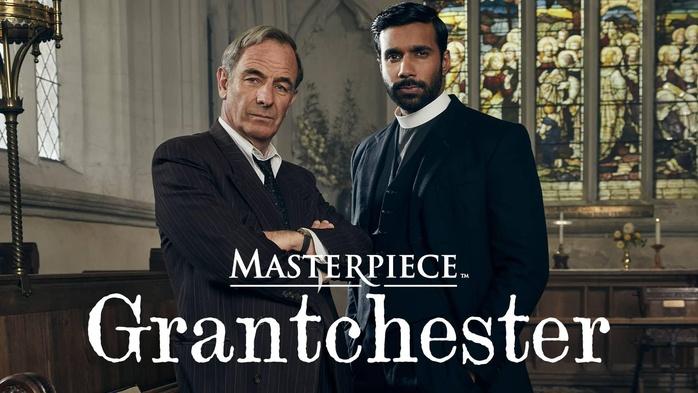


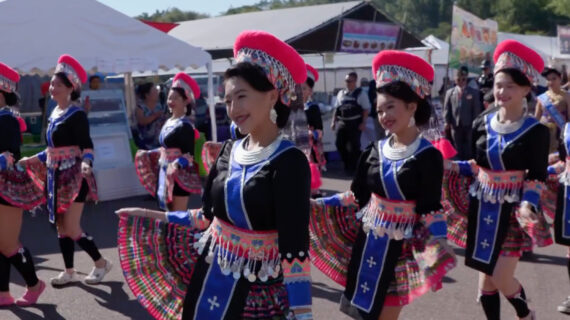
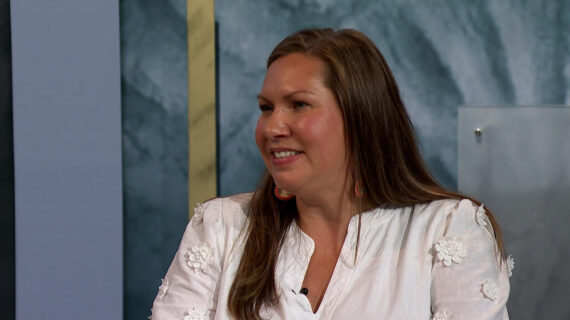
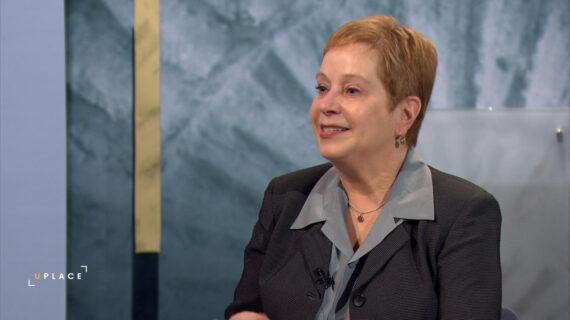

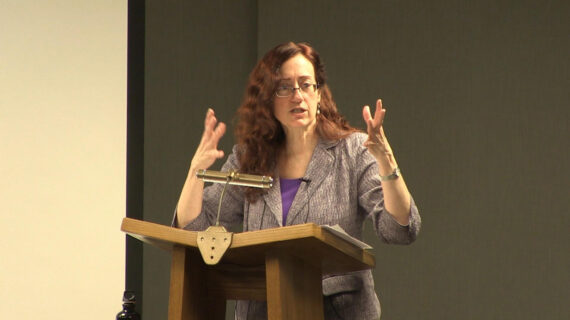



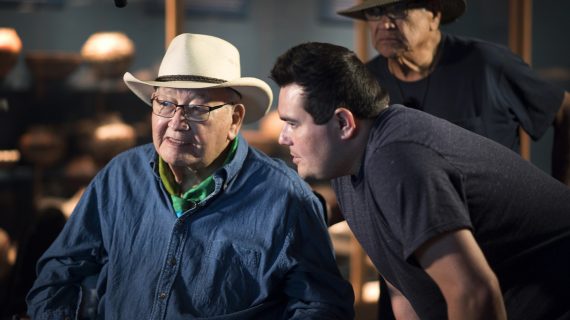



Follow Us